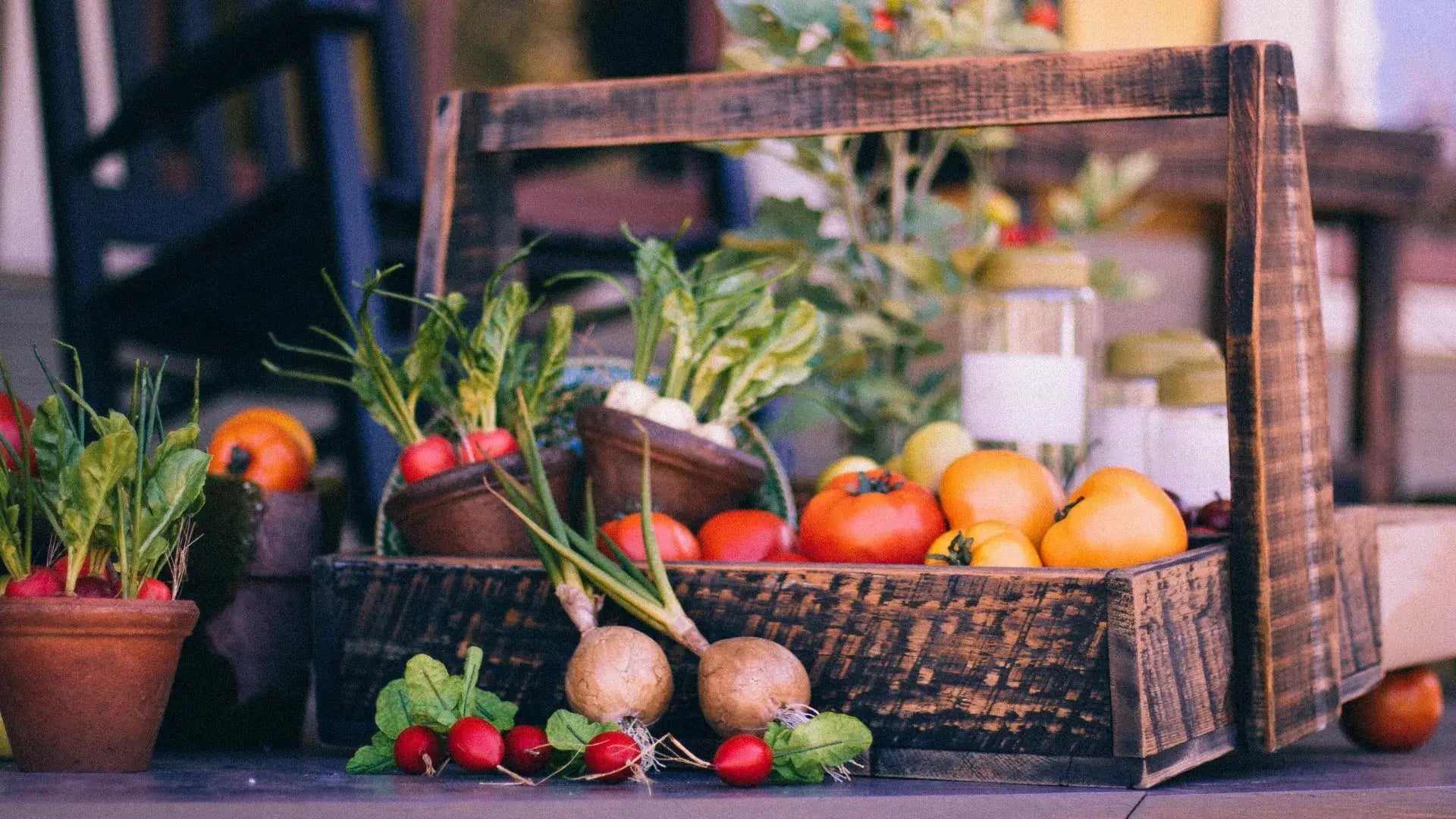Highlights
All of us are born with three primary energies—Vata, Pitta, and Kapha. Pitta governs the digestive and metabolic processes of our body. Thus, it is linked to Agni (the digestive fire in our stomach), which affects your overall wellness.
When Pitta levels are away from their optimum state, you may start experiencing a number of digestive and metabolic concerns. Fortunately, you can learn how to control Pitta levels. This can in fact be done by consuming a suitable diet.
Firstly, start eating foods and meals that innately have cool or sheeta potency, like grapes, pears, asparagus, squash, and zucchini. It’s also important to consume foods that are healthy and nourish your body rather than those that are high in saturated fats and extremely heavy.
Hydration is also vital, but it’s best if you stick to drinking water and light fruit juices and not caffeinated drinks, soda, or alcohol.
Whatever you do, make sure to not skip your meals. It’s necessary to consume your meals at the appropriate hour.
In addition to making dietary modifications, you can also control Pitta levels by making lifestyle changes like getting adequate sleep, meditating, and exercising.
If you are still wondering how to control Pitta or what more you can do, it’s a good idea to start taking Ayurvedic herbal supplements that help calm Pitta.

What is Pitta Dosha? What diet is to be followed for Pitta Dosha in Ayurveda?
Pitta Dosha is one of the primary functional energies in the body. Pitta deals with fire. It is the Dosha that deals with digestion and metabolism. It represents the transformational energy that governs both our mind and body. The answer to the question of what is a Pitta Dosha is that it is the energy managing the biochemical transformation in our body. If this energy is imbalanced, it can cause various health problems due to the accumulation of toxins in the body. Balancing Pitta is required to ensure the body’s metabolism continues to be in good condition. Following an Ayurvedic diet for Pitta can help balance Pitta Dosha.
How to balance Pitta?
Pitta balancing is needed if the Pitta Dosha has become vitiated or imbalanced. Any vitiation in this Dosha can lead to various disorders and problems that include:
- Excessive discomfort during hot weather conditions.
- Difficulty falling asleep after getting up at night.
- Acidity and bloating.
- Ulcers in the stomach and intestine.
- Frequent bowel imbalances with diarrhea.
- Irritable mood and temperament are prone to frustration.
- Jaundice and diseases related to the liver.
- Skin problems lead to allergic rashes and redness.
- Hair loss and premature graying of hair.
Balancing in Ayurveda for Pitta Dosha is possible by making changes in the diet as well as by adopting certain lifestyle changes. Some of the ways of how to control Pitta Dosha are:
- Pitta is the fire Dosha. Heat worsens this Dosha and hence avoid exposure to hot weather and try to keep cool physically. Avoid exposure to the mid-day sun.
- Pitta can lead to rage and anger, so you need to learn how to remain calm. Meditation and breathing exercises can help you relax and control your anger.
- Sheetali Pranayama is a type of breathing exercise that is considered very helpful in balancing Pitta.
- Overwork worsens the problems caused by Pitta. Sufficient rest and leisure time is recommended.
- Food should be taken at regular times daily. Lunch is an important meal of the day and is not to be missed.
- Herbal supplements are available in Ayurveda that can help correct imbalanced Pitta. Pitta needs to be eliminated and hence purging using a laxative is done as a part of treatment.
- Exercise and try out Yogasanas (postures) like Uttanasana (Bending forward pose), Dhanurasana (Bow pose), Bhujangasana (Cobra pose), and Adhomukhashwanasana (Downward facing dog pose).
- Avoid exercising in the daytime. Exercise or a walk during the cooler time of the day can be refreshing.
- Spend more time socializing and indulging in relaxing activities that can help you control the fiery nature that Pitta imbalance can create.
- A good night’s sleep is important. Try to sleep before 10 pm since the Dosha activates at the time of midnight.
-
Abhyanga or an oil massage using a cooling oil can be helpful. Using coconut oil to massage the scalp can help in cooling the mind and body.
How to reduce Pitta in Ayurveda?
Pitta Dosha in Ayurveda can be reduced in different ways. One of the best ways is to adopt a Pitta Dosha Diet. It can help reduce excessive Pitta and provide relief from the symptoms and problems caused. An Ayurvedic diet for Pitta would need to include Pitta pacifying foods. The foods to be included in the Pitta-reducing diet should be cool and help cleanse your body. Hot and spicy food should be avoided.
The following are some tips to help you follow a balanced diet for Pitta Dosha in Ayurveda:
- Sweet, bitter, and astringent-tasting foods help pacify Pitta. While sweet food is good, excess sugar should be avoided. Natural sweets are suggested.
- Kale, collard greens, cumin, neem, saffron, turmeric, bitter melon, and dark chocolates can be included in the diet.
- Apples, avocados, figs, grapes, bananas, melons, pomegranates, and plums are fruits to be consumed. Avoid dried fruits.
- Vegetables like asparagus, potatoes, zucchini, winter squash, okra, mushrooms, sprouts, cauliflower, peas, and beans should be added to the diet.
- Wheat, Basmati rice, barley, quinoa, and oats are cereals to be included in the diet.
- It is recommended to avoid meat while trying to reduce Pitta. Eggs can be a part of the diet.
- Legumes should be included in the diet.
- Milk products can be included in the diet. Ghee should be included to help with the smooth elimination of toxins.
- The oils to be used should be olive oil, coconut oil, or sunflower oil.
- Pungent foods like chilies, turnips, radishes, onions, and cayenne can be avoided.
- Sour and salty food should be minimized or avoided.
- Fruits, crackers, granola bars, and can be eaten as snacks.
- Minimize the use of caffeine and alcohol.
Pitta Dosha Diet Recipes
Some of the Pitta Dosha recipes given here use ingredients that help pacify Pitta Dosha. An Ayurvedic meal plan for Pitta Dosha can include some of these recipes that are tasty, healthy, and beneficial.
- Egg white with whole-grain toast or an omelet with vegetables can be had for breakfast.
- Oatmeal with hot milk, ghee, and honey (or syrup) is a good breakfast dish. Cream of wheat porridge.
- A salad made using quinoa, lime juice, and avocado with coriander powder, cumin, and sweet paprika would be tasty and would help pacify Pitta.
- A fruit salad made from apples, blueberries, and coconut pieces with honey is a tasty recipe helpful to reduce Pitta.
- Avocado fried rice made with ghee and eaten with wheat bread is a good option for lunch.
- Pasta made from whole wheat pesto with fresh vegetables like zucchini, carrots, and broccoli garnished with olive oil and cilantro is a good meal option.
- Barley and mung Khichdi, coconut rice with tofu/vegetable tempura.
- Red lentils can be cooked with cilantro, mint, carrots, celery, and purple cabbage to form a soup. Use ghee and cumin, coriander, and turmeric to season the soup. Eat with whole wheat bread.
- Date balls rolled in shredded coconut, baked apples/pears, and coconut cardamon tapioca pudding are some dessert options.
- A healthy milkshake can be made using dates and bananas.
- Mint tea, fennel coriander tea.
- Golden milk made from Milk, turmeric powder, saffron, and honey with a little bit of ghee can be consumed just before going to bed.
A diet with astringent, bitter, and cold food can be very helpful in reducing Pitta. Following the suggestions in this article can help in balancing and pacifying Pitta Dosha.
FAQ’s
Q1. What is a Pitta Dosha body type?
You can identify a Pitta Dosha body type based on a few key physical characteristics. Typically, Pitta types are of moderate height but have a muscular build. Their skin tends to be warm and greasy, while their hair is soft and prone to premature greying. Their nails are usually pink and flexible. They have sensitive skin, which can get sunburned rather easily. Even if they put on a few pounds, these body types can usually lose it without too much trouble.
Q2. What are the personality characteristics of Pitta Dosha types?
When your Pitta Dosha is in balance, you are likely to be thoughtful, direct, and articulate. Pitta types are known to have a strong intellect and a high level of self-confidence. They love participating in discussions and usually learn quite quickly. Pitta types enjoy leading an orderly life, with a set routine that they can fall back on. They often get stressed when their routine is thrown off balance. If your Pitta Dosha is out of balance and in excess, you may become alienating, short-tempered, highly competitive, manipulative, and argumentative.
Q3. What is the meaning of Pitta Dosha?
In Ayurveda, there are three Doshas, or life forces, namely Vata, Pitta, and Kapha. All of us have all three Doshas in varying levels, which is what makes our unique constitution. If the Pitta Dosha is your primary life force, it’s likely that you have a fiery nature, which comes across in both the mind and body. The Pitta life force controls all things related to digestion, metabolism, and transformation. Pitta essentially has the properties of water and fire, but the latter is typically a lot more evident.
Q4. What are the symptoms of aggravated Pitta Dosha?
According to Ayurveda, Pitta is a combination of fire, light, and oil. When there is an excess accumulation of Pitta in your body, you may experience the following symptoms:
- Body odor
- Excessive sweating
- Irritability and anger
- Excess release of heat in the body
- Gas and indigestion
- Diarrhea or constipation
- Nausea
- Bad breath
- Premature graying and hair loss
Q5. What is the best natural therapy to take care of aggravated Pitta?
People with dominant Pitta should, ideally, be in a state of balance and avoid extremes. This applies to the type of food that’s consumed and the activities that one indulges in. A few ways to help maintain the optimal level of Pitta are:
– Getting moderate sleep: Pitta types usually get a moderate amount of sleep, but it is important to maintain that sleep cycle. Sleeping and waking at about the same time will help keep Pittas in a state of balance. It is also important not to do stimulating activities like reading and watching television around sleep time.
– Not skipping meals: Pitta types typically don’t do too well when they skip or delay a meal. So, make it a point to eat your meals at the same time every day. You can also consume foods that are naturally bitter, sweet, or astringent and cooling foods to help your Pitta.
– Abhyanga (oil massage): Getting an oil massage with a cooling oil like coconut oil, can help maintain an optimal level of the Pitta Dosha.
– Take time to be in nature: Pitta types do very well when they spend a moderate amount of time in nature. So, make it a point to take walks in nature.
– Use Ayurvedic supplements: You can also pacify your Pitta Dosha by taking herbal supplements, like Thikthaka Ghritham, Draksharishtam, and Amla powder from the Kerala Ayurveda online store.




